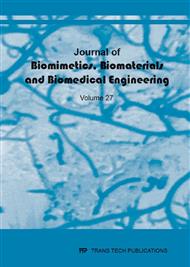p.1
p.24
p.36
p.44
p.55
p.60
p.77
p.92
p.103
Measurement of Threshold Image Intensities on Difference of Vascular Model: Effect on Computational Fluid Dynamics for Patient-Specific Cerebral Aneurysm
Abstract:
Threshold image intensity for patient vascular models is determined instinctively. In this study, we used the simple method of threshold resolve to evaluate the effect of threshold image intensity level on computational fluid dynamics (CFD) of patient-specific cerebral aneurysm. This investigation involved five patients with internal carotid aneurysms collected in retrospect between August 2010 and October 2012. In 3-dimensional rotational angiography with digital subtraction angiography (DSA) image data, we set five straight line probe across the parent of the internal carotid artery and deliberate the average profile curve of the image intensity along this line. To determine the threshold image intensity level objectively, we calculated the threshold coefficient Cthre using this profile curve. The effect of Cthre value on vascular model configuration and the wall shear stress (WSS) distribution of the aneurysm was evaluated. Result shows for the inlet area and volume of the vascular model decreased and WSS increased according to the Cthre value increase. In one stage, the pattern of WSS distribution changed strangely and the threshold image intensity level can result reflective effects on CFD. This finding necessary to advance a further understanding of problems in image segmentation and solving the patient-specific aneurysm problems.
Info:
Periodical:
Pages:
55-59
Citation:
Online since:
May 2016
Authors:
Price:
Сopyright:
© 2016 Trans Tech Publications Ltd. All Rights Reserved
Share:
Citation:


